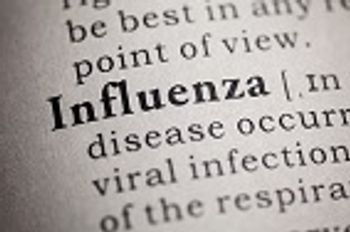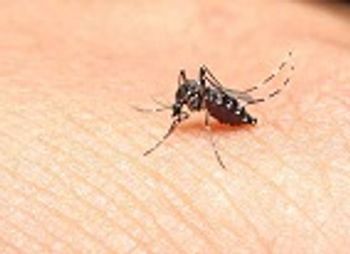
In a recent publication, Catherine F. Decker, MD, from Walter Reed National Military Medical Center, Bethesda, Maryland, discussed some infections that have recently emerged as important sexually transmitted diseases.

In a recent publication, Catherine F. Decker, MD, from Walter Reed National Military Medical Center, Bethesda, Maryland, discussed some infections that have recently emerged as important sexually transmitted diseases.

As of today, the CDC has changed the reporting criteria for Zika infection in pregnant women, to include those who are asymptomatic but test positive for a flavivirus.

This new approach could hold promise as a novel method of vaccinating against herpes simplex-2 virus (HSV-2).

The consequences of not understanding the actual rate of asymptomatic influenza infection can be grave, as influenza virus infection of the respiratory tract has been shown to result in severe disease and complications, including pneumonia, shock, renal failure, encephalopathy, and multiorgan dysfunction, which can be lethal.

The findings of a recent study coordinated by the Centers for Disease Control and Prevention (CDC) and local departments of health in southern Texas highlight the risk for localized outbreaks of Dengue fever in the region and other areas of the United States with similar climatic and environmental conditions. This is particularly alarming as Texas is already well-within range of an outbreak of another vector-borne illness: Zika virus.

Researchers at the University of Texas Medical Branch (UTMB) at Galveston have successfully cloned the Zika virus strain.

A recent study has demonstrated that, although annual HIV infection and transmission rates declined in the United States over the last 5 years, they fell short of the goals outlined in the US National HIV/AIDS Strategy.

“An outbreak anywhere is a risk everywhere,” according to the Centers for Disease Control and Prevention (CDC). Officers of the CDC’s Epidemic Intelligence Service (EIS) are studying several emerging infections – those that have recently increased or show signs of increasing soon – and five researchers presented their results May 4 in the Emerging Infections session of the 65th Annual Epidemic Intelligence Service (EIS) Conference in Atlanta, Georgia.

The US government must allocate additional resources toward global research and development (R&D) efforts working toward solutions for historically “neglected” diseases such as malaria, tuberculosis, and HIV/AIDS in order to meet the challenges posed by them, a new report has concluded.

Several school districts in India are being asked to take proactive steps to contain Dengue fever locally as monsoon season approaches.

The Centers for Disease Control and Prevention (CDC) recently announced that it has expanded the use of a disease identification tool to help speed disease recognition in laboratories.

An estimated 722,000 healthcare-associated infections occurred in acute care hospitals in the United States in 2011, and roughly 75,000 patients who acquired them died while still in the hospital, according to the Centers for Disease Control and Prevention (CDC).

On May 16, 2016, the Australian Olympic Committee (AOC) announced that the country’s Olympic team members will receive Dual Protect VivaGel condoms, the world’s only antiviral condom, for the 2016 Olympic Games in Rio de Janeiro.

The Senate has voted to grant $1.2 billion in funding to fight the impending local transmission of the Zika virus in the United States.

In early April the World Health Organization (WHO) announced that most provinces in Angola have experienced a yellow fever outbreak. Now, scientists are calling this the country’s worst epidemic since 1986, urging WHO to take action.

New legislation designed to bolster food safety regulations in the United States largely hands increased power to state agencies overseeing the farming sector.

A recent study has shown that human immunodeficiency virus (HIV) enters cells throughout the entire female reproductive tract from the labia to the ovary—not just in the cervix, as previously thought.

A recent study has shown that stress and depression in adolescent females are linked to human papillomavirus (HPV)-related health problems—in particular, whether the viral infection persists long enough to increase the risk of cervical cancer.

Researchers from the National Infection Service at Public Health England (PHE) in the UK may have identified the perfect platform for trials of future vaccines and antivirals for the management of Zika.

Seven monkeys in Ceará, Brazil have tested positive for the Zika virus.

Health officials in Puerto Rico have reported the first Zika-related case of microcephaly. The announcement comes on the heels of news of the first Zika-related death in the country just last week.

It would seem that the Centers for Disease Control and Prevention (CDC) is not waiting for Congress to decide on Zika funding.

Opinion polls indicate the general public remains relatively unconcerned about the threat of Zika, despite the existence of confirmed cases in the United States.

Zoonotic diseases caused by viruses, bacteria, parasites, and fungi that are spread between animals and humans are quite common and scientists estimate that more than 60% of human infectious diseases are spread from animals.

For patients who suffer from certain uncomplicated infections such as, sinusitis, bronchitis, and uncomplicated urinary tract infections, the health risks associated with fluoroquinolone far outweigh the benefits.

It has been more than 50 years since an epidemic resulted in as many birth defects as the Zika virus. To address this epidemic, the second in a series of six teleconferences, hosted by the Centers for Disease Control and Prevention (CDC), discussed Zika infection during pregnancy as well as subsequent birth defects.

Congress is in the midst of approving a bill that may grant over $1 billion in funds to combat the active transmission of the Zika virus in the United States.

Officers of the CDC’s Epidemic Intelligence Service (EIS) presented recent research on tuberculosis (TB) on May 3 in a session at the 65th Annual Epidemic Intelligence Service Conference in Atlanta, Georgia. A summary of the presentations is included in this article.

Evidence from a clinical trial has shown that a new vaccine protects adults against malaria infection for at least 14 months.

Contagion™ Editorial Board member, Charitha Gowda, MD, MPH breaks down the World Health Organization hepatitis C (HCV) guidelines update, and reminds healthcare professionals to build on these guidelines to advocate for the most effective and safest treatment options for our individual patients and all patients worldwide.